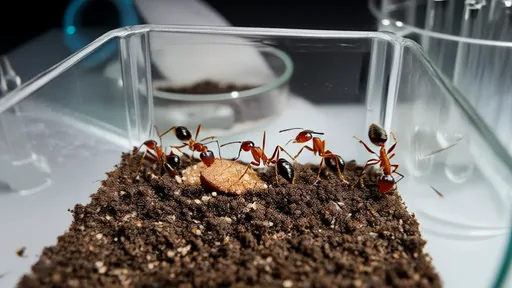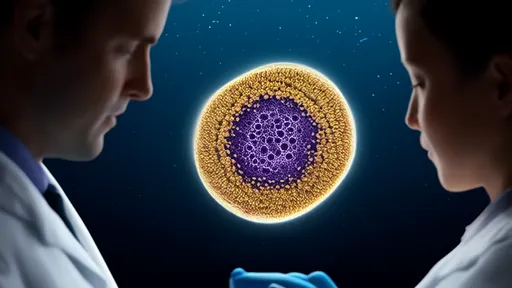In the dense undergrowth of tropical forests and even in our own backyards, an intricate network of cooperation unfolds daily among one of Earth's most successful creatures – ants. Their highly organized societies have thrived for over 100 million years, offering profound insights into collective intelligence and decentralized problem-solving. The study of ant behavior isn't merely an entomological curiosity; it provides tangible lessons for human systems ranging from traffic management to distributed computing networks.
The Invisible Highways Beneath Our Feet
Watch any ant trail for more than a few minutes, and you'll witness what appears to be chaos – until the pattern emerges. These crawling convoys follow precise routes established through pheromone trails, chemical signals that evaporate over time unless reinforced by more ants. This simple mechanism creates self-optimizing pathways where the shortest routes gain the strongest scent markers. During food shortages, certain ant species demonstrate remarkable flexibility – older workers will literally carry younger ants to new foraging locations, physically transferring institutional knowledge to the next generation of workers.
Researchers at the University of Sydney recently documented how Australian meat ants solve traffic congestion problems that would baffle urban planners. When major pathways become overcrowded, ants don't simply push through or wait passively. Instead, they activate pre-existing alternate routes within minutes, distributing the flow efficiently without any central command. This phenomenon mirrors how internet protocols reroute data packets around network congestion, suggesting evolutionary algorithms may hold solutions for our digital infrastructure.
The Architecture of Cooperation
Ant colonies achieve extraordinary architectural feats without blueprints or foremen. Leafcutter ants construct underground fungal farms with precise humidity controls, while weaver ants stitch living nests from tree leaves using larval silk. These constructions emerge from countless micro-interactions where each ant responds to local stimuli and the work of nearby nestmates. The distributed cognition displayed in these projects challenges our traditional notions of intelligence and planning.
A groundbreaking study published in Nature revealed how fire ants form living rafts during floods. Each ant's exoskeleton repels water slightly, but the true marvel lies in their collective behavior. By linking limbs and constantly rearranging positions, they create buoyant structures that can survive turbulent waters for weeks. This self-sacrificing cooperation ensures the queen and brood survive at the raft's center, while workers take turns at the most dangerous perimeter positions. Robotics engineers are now mimicking these principles to design swarming drones that can form adaptive structures for disaster relief.
Conflict Resolution in a Society Without Leaders
Ant colonies lack centralized authority, yet they maintain remarkable social cohesion. When conflicts arise – say, over nest site selection – they employ fascinating democratic processes. Rock ants have been observed conducting a form of quorum sensing, where scouts recruit others to potential new homes until a threshold of agreement is reached. This decentralized decision-making often yields better outcomes than top-down approaches, as it incorporates diverse information from multiple explorers.
The harvester ants of the American Southwest demonstrate another sophisticated conflict management system. During periods of food scarcity, older foragers voluntarily increase their risk exposure, searching farther afield while younger ants focus on safer, closer resources. This age-based labor division emerges without coercion or command, representing an elegant solution to risk distribution that human organizations might emulate when allocating hazardous duties.
Lessons for Human Systems
What makes ant societies particularly relevant today is their resilience in the face of disruption. When researchers remove large portions of a colony's workforce, the remaining ants spontaneously adjust their behavior to compensate. Some increase their work rate, while others switch to entirely new tasks. This plasticity stems from simple rules followed by many individuals, rather than complex programming in any single ant. Tech companies are now applying similar principles to create more robust distributed computing systems that can withstand multiple node failures.
Perhaps the most humbling realization from myrmecology is that ants achieve these feats with brains smaller than a pinhead. Their collective intelligence arises not from individual brilliance, but from perfected systems of interaction refined over evolutionary timescales. As humanity faces increasingly complex global challenges – from climate change to pandemic response – we might look downward for inspiration. The ants have been running a sustainable civilization for millennia without destroying their environment or each other. That's a track record worth studying.
The next time you see ants marching in formation, pause to consider the invisible algorithms guiding their steps. These tiny engineers have mastered distributed problem-solving, adaptive resource management, and resilient social organization – all without meetings, memos, or managers. In their world, every individual understands how local actions serve global needs. That may be the most valuable lesson of all.

By /Jul 15, 2025

By /Jul 15, 2025

By /Jul 15, 2025

By /Jul 15, 2025

By /Jul 15, 2025

By /Jul 15, 2025

By /Jul 15, 2025

By /Jul 15, 2025

By /Jul 15, 2025

By /Jul 15, 2025

By /Jul 15, 2025

By /Jul 15, 2025

By /Jul 15, 2025

By /Jul 15, 2025

By /Jul 15, 2025

By /Jul 15, 2025

By /Jul 15, 2025

By /Jul 15, 2025